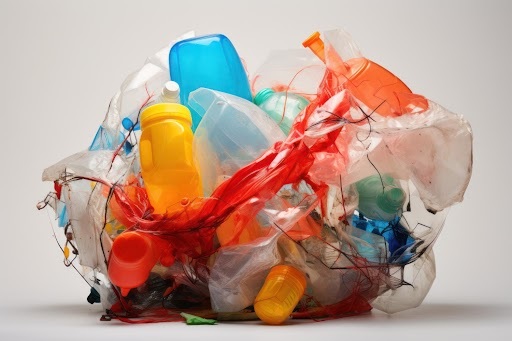EPR Plastic Compliance: Steps Every Company Should Follow in 2025

As environmental concerns continue to grow worldwide, businesses are under increasing pressure to manage plastic waste responsibly. In 2025, EPR (Extended Producer Responsibility) plastic compliance has become a key regulatory requirement for companies that manufacture, import, or sell plastic packaging and products. The objective of EPR is simple: to ensure that businesses take accountability for the entire lifecycle of their plastic products, from production to post-consumer waste management.
For companies aiming to stay competitive and compliant, understanding the right steps toward EPR plastic compliance in 2025 is crucial. Below, we outline the key measures businesses must follow.
1. Understand the Legal Framework in Your Country
The first step in achieving EPR plastic compliance is familiarizing yourself with local laws and global regulations. Governments across the world, including India, the EU, and other regions, have strengthened their EPR guidelines for 2025. For example:
- India: The Ministry of Environment, Forest and Climate Change (MoEFCC) has made EPR mandatory for producers, importers, and brand owners.
- European Union: The EU’s updated directive focuses on reducing single-use plastics and increasing recycling rates.
- Other regions: Many countries are aligning their policies with global sustainability targets.
Companies must carefully review these rules to understand registration requirements, reporting obligations, and penalties for non-compliance.
2. Register Under the EPR Compliance Portal
Every producer, importer, or brand owner handling plastic must register with the official government EPR compliance portal. Registration typically involves:
- Company details (name, address, GST, PAN, etc.)
- Type and quantity of plastic used or produced
- Proposed waste management and recycling plans
Without registration, companies cannot legally operate in the plastic industry in 2025. This step is essential to build transparency and accountability.
3. Categorize Plastic Waste Properly
The categorization of plastic waste plays a vital role in compliance. Plastic packaging is divided into four main categories:
- Rigid plastic packaging (bottles, containers, caps)
- Flexible plastic packaging (wrappers, pouches, bags)
- Multi-layered plastic packaging (chips packets, laminated materials)
- Compostable plastics (biodegradable packaging approved by authorities)
Correctly classifying the types of plastics used helps businesses determine their recycling targets and responsibilities.
4. Develop a Waste Management Plan
Once registration and categorization are complete, companies must outline a waste management strategy that covers:
- Collection of post-consumer plastic waste
- Recycling partnerships with authorized agencies
- Co-processing and environmentally safe disposal methods
- Use of recycled content in packaging
This ensures that businesses contribute to the circular economy rather than adding to the growing plastic pollution crisis.
5. Collaborate with PROs (Producer Responsibility Organizations)
Not every company has the infrastructure to manage plastic waste independently. That’s where PROs (Producer Responsibility Organizations) come in. These specialized agencies help companies collect, recycle, and dispose of plastics as per EPR regulations.
By partnering with certified PROs, businesses can:
- Outsource waste management effectively
- Ensure compliance without operational disruption
- Track and document recycling activities for government audits
In 2025, collaboration with PROs has become the most reliable way for businesses to meet their EPR targets.
6. Embrace Recycled and Sustainable Packaging
To stay compliant and appeal to eco-conscious customers, companies must adopt sustainable packaging practices. Some effective strategies include:
- Increasing the use of PCR (Post-Consumer Recycled) plastics
- Switching to biodegradable or compostable packaging
- Reducing excessive packaging layers
- Promoting refillable or reusable packaging solutions
This not only ensures compliance but also enhances brand reputation in the market.
7. Maintain Accurate Records and Reports
Transparency is a critical element of EPR plastic compliance in 2025. Companies must maintain detailed records of:
- Plastic produced, imported, or sold
- Amount of waste collected and recycled
- Partnerships with PROs or recyclers
- Annual returns submitted to government portals
Regular audits and accurate reporting prevent penalties and build trust with regulators, customers, and stakeholders.
8. Train Your Team and Build Awareness
Compliance is not just a responsibility of the top management. It requires involvement from every department, including production, procurement, supply chain, and marketing. Training employees about EPR regulations ensures:
- Awareness of sustainable practices
- Reduced risk of non-compliance
- Alignment with corporate sustainability goals
Companies should also run awareness campaigns for consumers, encouraging them to recycle and return plastic packaging.
9. Monitor Updates and Policy Changes
EPR policies continue to evolve, especially as governments push toward stricter sustainability goals. Companies must regularly monitor regulatory updates to stay compliant. Subscribing to official notifications, working with consultants, and engaging with industry associations can help businesses stay ahead.
Conclusion
In 2025, EPR plastic compliance is not just a legal requirement but also a business necessity. Companies that proactively adopt eco-friendly practices, invest in recycling systems, and work with PROs will not only avoid penalties but also strengthen their brand image.
By following the steps above—understanding regulations, registering on portals, categorizing plastics, developing waste management plans, collaborating with PROs, and embracing sustainable packaging—businesses can achieve compliance and contribute to a cleaner, greener future.
Ultimately, EPR is about responsibility. Every company that produces or uses plastic has a duty to manage its impact on the environment. Taking the right steps today ensures a sustainable tomorrow.






